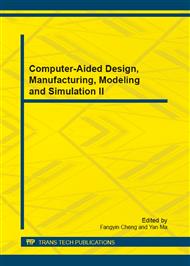p.291
p.296
p.303
p.307
p.311
p.317
p.322
p.327
p.331
Subspace-Based Indirect Adaptive State-Space Model Predictive Control
Abstract:
In order to deal with nonlinear, time-varying and disturbance-involved characteristics in the practical industrial processes, an indirect adaptive state-space MPC (model predictive control) method based on subspace identification is proposed. The state-space model, obtained through the POMOESP (Past Output MOESP, MOESP is one form of the subspace identification methods) algorithm, is regarded as the system model. Then, this model is used to design the model predictive controller that involves the solution of a quadratic programming problem to constraints. This controller is applied to the process control simulation on a 2-CSTR. Through comparisons of performance with a linear state-space MPC scheme, the superiority of the proposed control method is illustrated.
Info:
Periodical:
Pages:
311-316
Citation:
Online since:
December 2012
Authors:
Price:
Сopyright:
© 2013 Trans Tech Publications Ltd. All Rights Reserved
Share:
Citation:


